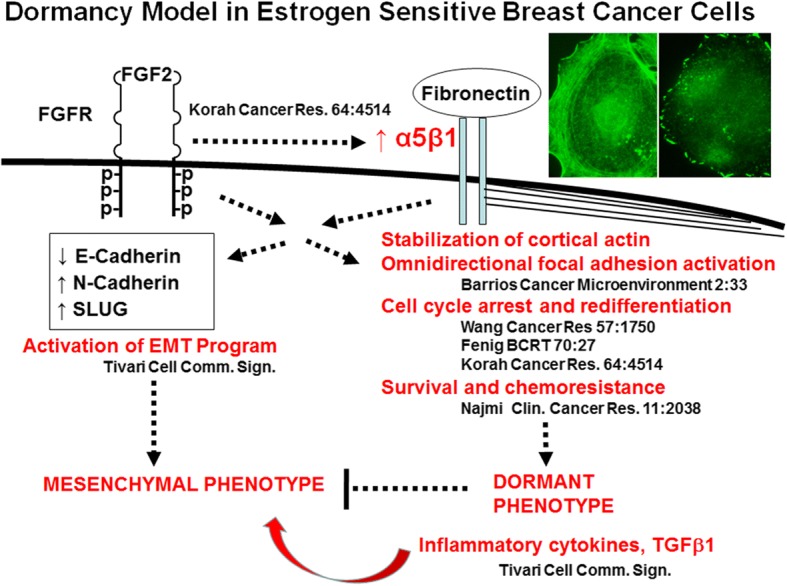Fig. 10.

Schematic of the in vitro FGF-2-initiated dormancy model of estrogen sensitive human breast cancer cells. According to the model, FGF-2 induces re-expression of integrin α5β1 and together with its fibronectin-binding, a cell dormancy phenotype through cell spreading, cortical redistribution of fibrillar actin and omnidirectional activation of FAK, cell cycle arrest, survival and chemoresistance. FGF-2 and α5β1 also induce activation of the EMT gene expression program which can lead to a mesenchymal phenotype, but the transition is repressed by the dormancy program. This repression is released by inflammatory cytokines and TGFβ1, outlined within this study. References are provided for events outlined. Phylloidin-stained (left) and anti-phospho-FAK-stained (right) dormant MCF-7 cells on fibronectin are displayed
